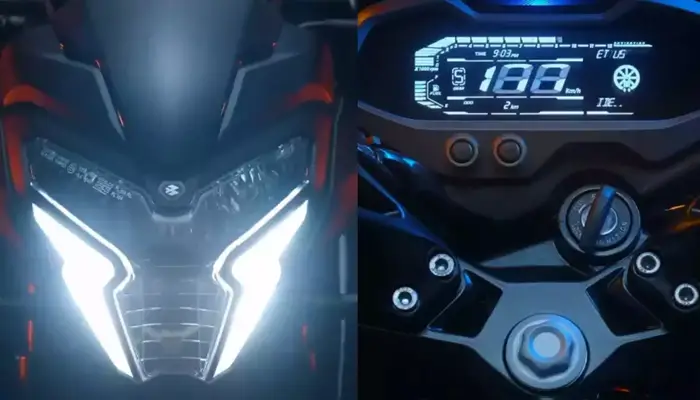
Bajaj has recently updated the N250 and NS200, but it has left Pulsar fans confused
Renowned Indian motorcycle maker Bajaj recently updated two of its motorcycles – the Pulsar N250 and the Pulsar NS200. Starting with the N250, the motorcycle now comes with an upside-down fork at the front, whereas on the dashboard, the motorcycle features a fully digital instrument cluster with Bluetooth connectivity coupled with turn-by-turn navigation. The motorcycle now also gets a 140-section fatter rear tyre, and in terms of features, the N250 is now equipped with traction control along with three ABS modes: Rain, Road and Off-road.
These updates may seem significant to a rookie motorcyclist. However, in the eyes of hardcore moto-enthusiasts, such features are now available in almost every 200-250cc motorcycle and even on several motorcycles positioned below the 200cc segment.
Moving on to the NS200, the motorcycle has been a legend since its inception in 2012. However, in its 12 years of existence, the motorcycle never received a significant update until recently. The motorcycle now has a new LED fascia with LED DRLs, a fully digital instrument cluster with Bluetooth connectivity coupled with turn-by-turn navigation, SMS/call alerts, three-mode ABS, traction control, and a slipper clutch.

The new updates of the Bajaj Pulsar NS200
While the N250 is more or less the newest addition to the Bajaj stable, the NS200 is over a decade old. However, both motorcycles are mechanically unchanged. In terms of performance, the NS200 and N250 are close to the rest of the lot in the 200-250cc segment, but in today’s evolving motorcycling industry, the engines now seem dull—not dull in terms of performance but the fact that they have nothing new to offer to the moto-enthusiasts who have been operating such engines for pretty long.
This is where the flagship crisis begins for Bajaj. For example, lets take TVS – it is very clear that TVS positions the Apache RR 310 and the Apache RTR 310 as its flagship productions. For KTM, its flagship product in the Indian market has always been the Duke 390 and ADV 390 (400cc segment). For Royal Enfield, its flagship products are the Super Meteor 650 and the newly-launched Himalayan.

The Apache RTR 310, one of the most aggressive looking motorcycles in the 300cc naked streetfighter segment
However, when it comes to Bajaj, none of their products can be pointed to as flagships. The Bajaj Dominar 400, the company’s only 400cc motorcycle, failed to woo consumers in India. The N250 and NS200 are so closely stacked, and given their not-so-supreme build quality, they cannot be called premium products either. The rest of the line below 200cc cannot be hailed as premium either because of the better alternatives present in the market.
In short, as of now, from a consumer point of view, we simply do not know which motorcycle we should pick from Bajaj’s stable and call it a premium. After all, when a consumer decides to spend over INR 1.50 lakh or INR 2 lakh, he or she wishes to experience the premium feeling. Unfortunately, none of the Bajaj motorcycles can give that joy.
Up next, on May 3, Bajaj is set to launch the NS400, which is expected to feature the new 398cc engine that runs the Duke 390. While on the mechanical front, Bajaj may nail the game, it needs to focus on the quality side of things. If Bajaj sticks to the same level of fit, finish, and quality that the company used on the Dominar, the NS400, too, may not impress the Indian moto-enthusiasts.